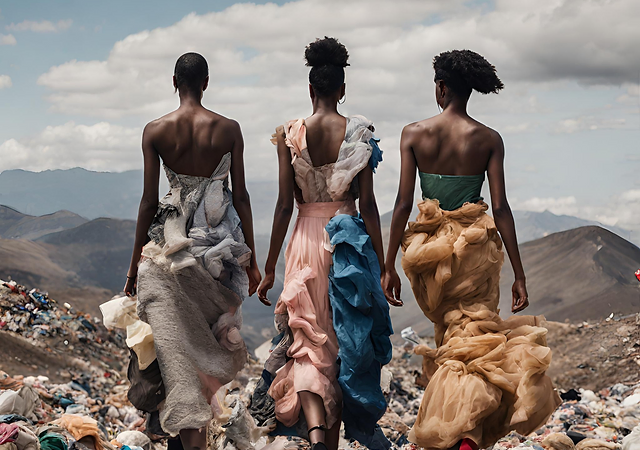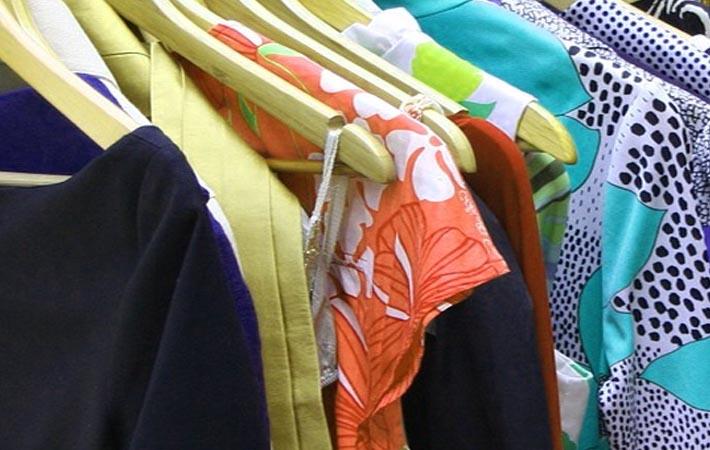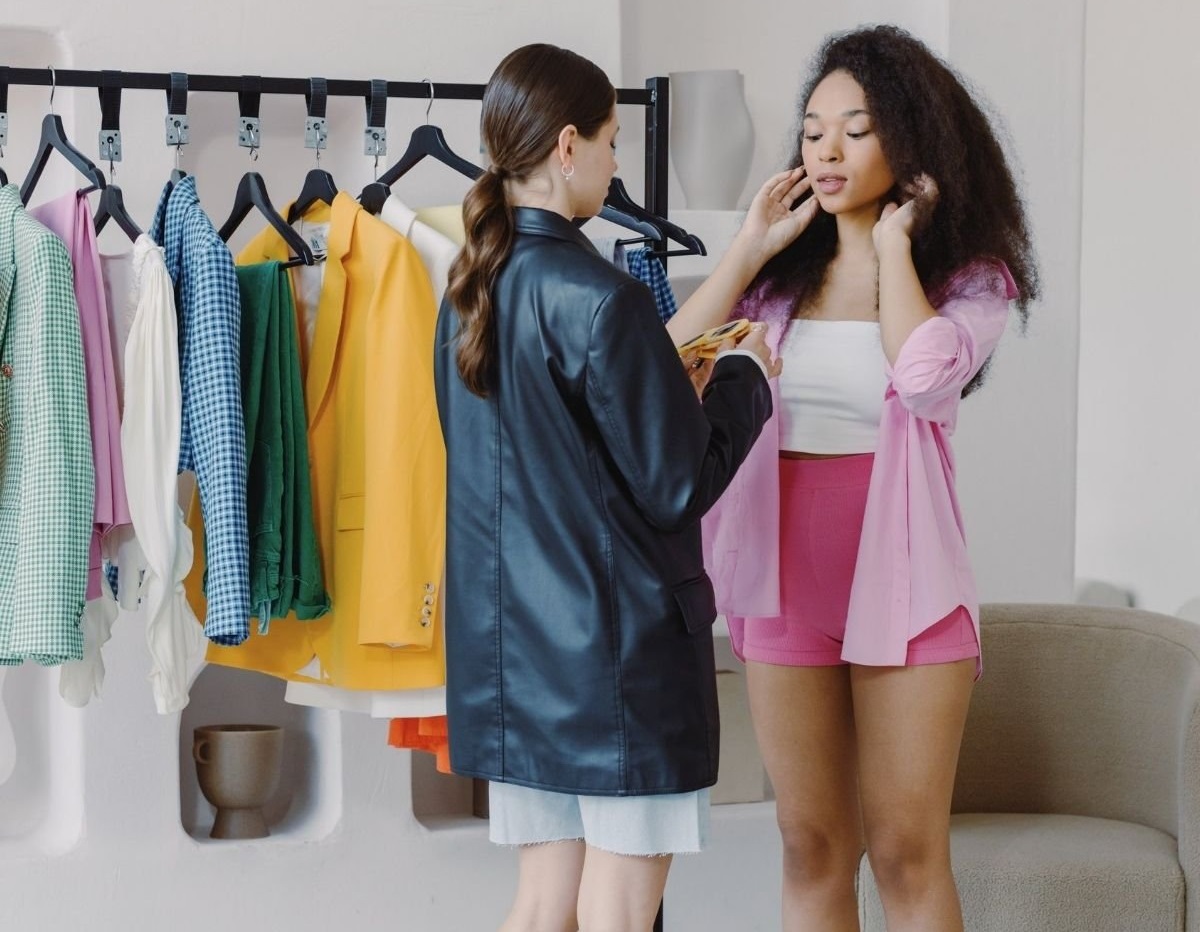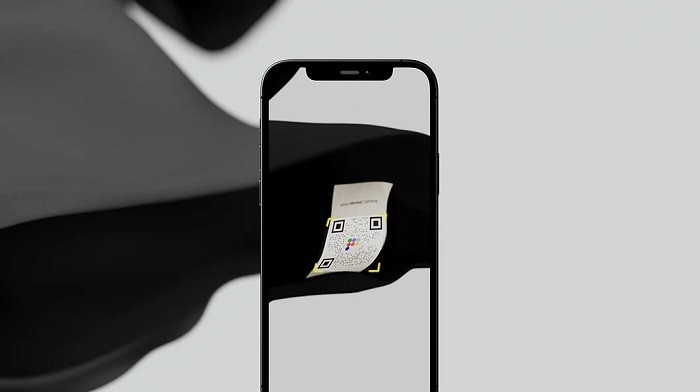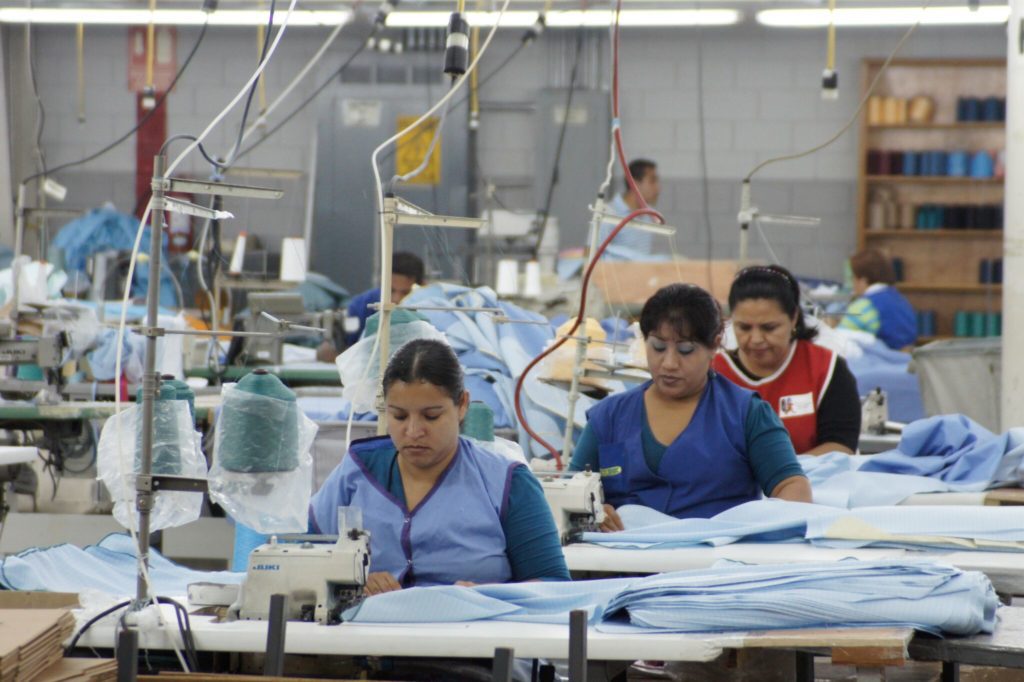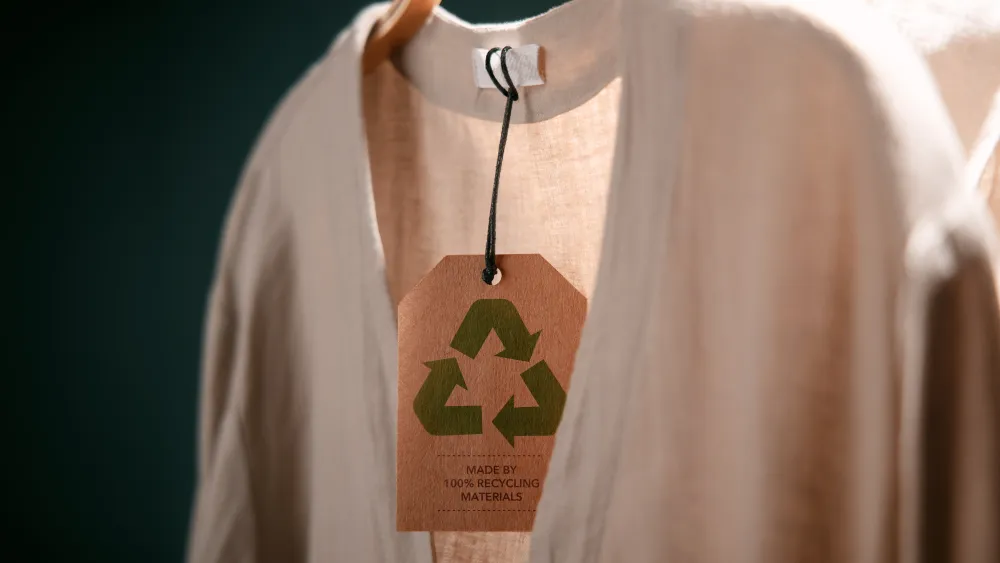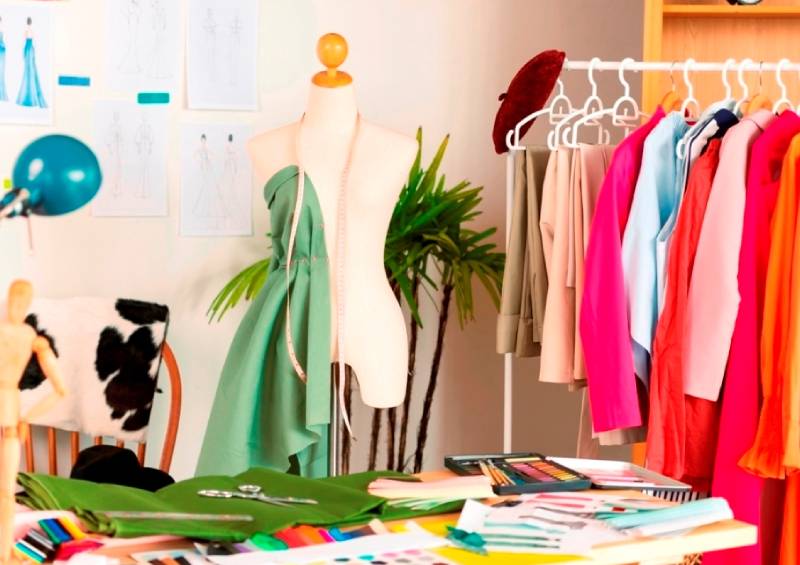FW

Robert Antoshak, a consultant for the global apparel industry presents a mixed outlook for the US apparel market, acknowledging recent improvements while highlighting ongoing concerns. In a United States Fashion Industry Association (USFIA) webinar featuring him, Antoshak highlights signs of recovery while acknowledging ongoing challenges.
Recovery signs
Antoshak outlines several tell tale signs of recovery.
Imports on the rise: After a pandemic-induced slowdown, apparel imports are climbing again, with China regaining its position as the top supplier. This suggests a renewed demand for clothing in the US.
Inventory levels stabilize: Retailers are successfully managing their stock, with nagging inventory gluts subsiding. This is further underscored by a healthy inventory-to-sales ratio, which has returned to pre-pandemic levels.
Consumer spending up: Apparel sales have grown, with the inventory-to-sales ratio returning to pre-pandemic levels.
Lingering issues
However, despite the positivity there are several lingering issues. One major one is shifting consumer preferences. The data reveals a curious trend in product categories while sales are up the product mix has changed, with a trend towards casual wear.
Several external factors can significantly impact the market's trajectory. These include inflationary pressures. Overall inflation is a concern, though apparel price increases have been modest so far. Consumer sentiment and confidence has dipped slightly after a period of optimism. Disposable income growth has slowed in recent months. Also, the US population is skewing older and heavier, potentially affecting clothing needs.
Market forecast
Uncertainty reigns: Antoshak presented a range of forecasts, acknowledging the difficulty of predicting the market's trajectory due to numerous external factors.
Government policy: Trade agreements, tax regulations, and environmental standards are all areas of potential concern.
Geopolitical tensions: The ongoing situation in Ukraine and tensions between the US and China could disrupt supply chains and raise costs.
Technological advancements: Advancements in areas like artificial intelligence and online retail could significantly impact the industry.
Competition heats up: The market is becoming increasingly competitive, with new business models like hyper-fast fashion emerging.
Shipping challenges: Rising fuel costs, geopolitical instability, and stricter customs enforcement could complicate global apparel trade.
The bottom line is recovery is on the horizon, but patience is required. The US apparel market shows signs of progress, with sales rising and inventories under control. However, a full recovery hinges on navigating various challenges. Antoshak concludes with a cautiously optimistic outlook, stressing that the market's future health depends on multiple evolving factors.
British e-commerce firm THG plans to sell its portfolio of luxury goods websites to Mike Ashley's Frasers Group.
The portfolio being sold includes Coggles, an international fashion retailer known for its designer collections. Despite facing challenges in the luxury market, THG’s luxury division managed to generate approximately £43 million ($54.39 million) in sales last year, operating around the break-even point.
Known for its sportswear and apparel retail, Mike Ashley’s Frasers Group has been expanding its luxury segment, which includes brands such as Flannels. The acquisition of THG’s luxury portfolio is expected to bolster this expansion.
This strategic move marks a significant step for both companies, as THG shifts its focus and Frasers Group enhances its luxury brand offerings.
As part of the transaction, THG and Frasers have also agreed to a partnership spanning several areas. This includes collaboration with THG Ingenuity, THG’s proprietary online platform that supports third-party brands, and Myprotein, THG’s leading online sports nutrition brand.
Mumbai is set to host the 15th edition of HGH India, the bi-annual trade show for home textiles, decor, furniture, houseware, and gifts, from July 2 to July 5 at the Bombay Exhibition Center. This event, pivotal for the home improvement sector, bridges Indian and global brands with the domestic market, offering comprehensive sourcing solutions for retailers, distributors, architects, and interior designers.
This year's HGH India will unveil 2,500 innovative products across 50,000 sq. meters, featuring 700 brands from 32 countries, including newcomers from Germany, Hong Kong, Malaysia, Russia, and Ukraine. India itself contributes 120 new exhibitors, presenting a range of furnishing fabrics, bed and bath items, decorative accessories, home furniture, handicrafts, and cookware.
The event garners substantial support from the Ministry of Textiles, Government of India, and various export councils. The Development Commissioner Handicrafts has facilitated the participation of artisans through agencies like the Export Promotion Council for Handicrafts (EPCH) and the North East Handicrafts & Handloom Development Corporation (NEHHDC). These artisans will display unique crafts in cane, bamboo, wood, eri silk, and tassar silk. The Development Commissioner Handloom, in collaboration with the Handloom Export Promotion Council and National Design Centre, has organized group participation focusing on hand-woven textiles.
HGH India continues its collaboration with the Indian Institute of Interior Designers (IIID), Mumbai Chapter, to enhance the event's benefits for architects and interior designers. This partnership provides these professionals with direct connections to manufacturers and brands, facilitating integrated home design solutions.
The prestigious H-Circle Awards, which recognize innovation in home products, will return for their third edition. Additionally, the "Culture Codes: Identity & Curiosity" trend for Autumn/Winter 2024-25 will be showcased, emphasizing a blend of Indian traditions with modern technology and global influences.
HGH India remains committed to promoting India's rich cultural heritage through its "Indian Heritage" brand. This initiative, supported by various government agencies, connects retailers and designers with skilled artisans, ensuring the preservation of traditional crafts. The Indian Heritage pavilion will feature live demonstrations by master craftsmen, creating exquisite hand-crafted products in pottery, wood and metal craft, handloom embroidery, and more.
With its diverse range of exhibitors, robust government support, and focus on innovation and tradition, HGH India 2024 promises to be an unparalleled event in the home improvement sector, offering valuable opportunities for networking, sourcing, and discovering the latest trends.
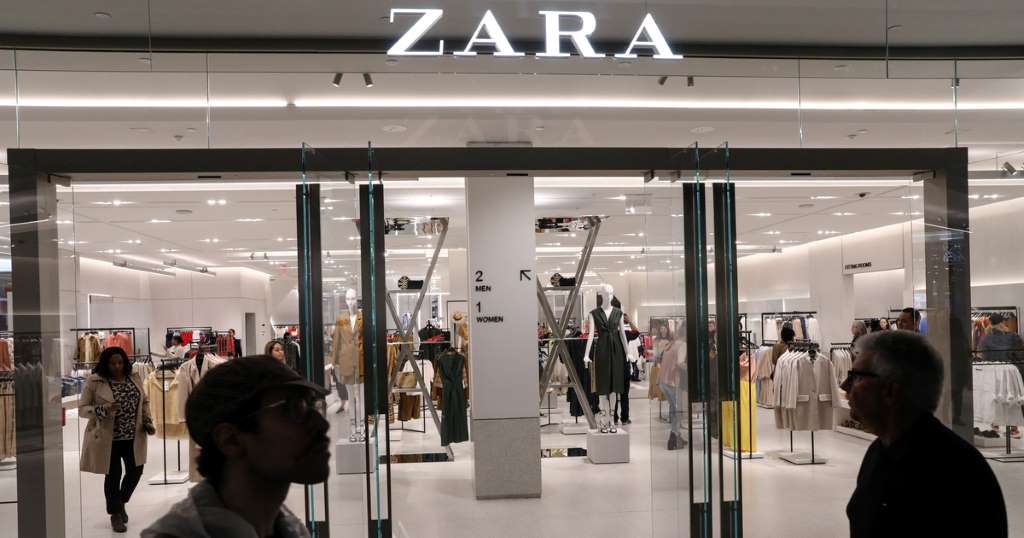
Zara, the fast-fashion giant, is making waves with its foray into live shopping. After experiencing a 50 per cent increase in product size sales in China thanks to their livestreams, Zara is setting its sights on Western markets. This trend, wildly popular in China, is being cautiously adopted by the brand.
From Douyin to your doorstep
Zara's live shopping journey began in November 2023 on Douyin, the Chinese sister app of TikTok. Their concept: weekly, five-hour long shows featuring models showcasing the latest collections. But Zara's approach is different. Instead of the fast-paced, product-pushing style common in China, Zara's streams are more akin to fashion presentations. Think catwalks, dressing room glimpses, and even ‘behind-the-scenes’ peeks at the crew, this curated experience now resonates with Chinese consumers, with their first livestream garnering a whopping 1.2 million views.
Westward bound, a calculated expansion
Buoyed by the Chinese success story, Zara is taking its live shopping concept global. The brand plans to launch similar shows on its app and website in the US, UK, and Europe by October 2024. This measured rollout reflects the different e-commerce landscapes. While livestream shopping is booming in China, Western markets haven't fully embraced it, according to PYMNTS.com. Zara seems to be aware of this. Unlike the fast-paced Chinese model, Zara's streams are reported to be more curated and aesthetically pleasing. However, Zara's success in China suggests there's potential. The ability to see clothes modelled in a variety of settings and ask questions in real-time could be a game-changer, particularly for younger, tech-savvy demographics.
Too early to gauge its success
While the Chinese results are promising, predicting Western reception is difficult. Experts like Andrew Lipschultz of HulkApps warn that established online shopping habits and cultural differences might pose a challenge. However, Zara's brand recognition and focus on a curated experience could give them an edge. Ultimately, the success of Zara's live shopping experiment will depend on their ability to adapt the concept to Western preferences and create a truly engaging and interactive experience for viewers.

India's ambitious plan to reach $100 billion in textile and apparel exports by 2030 faces challenges but holds promise. This includes $40 billion from apparel exports.
As per WTO 2023 statistics, India is the second-largest textile exporter globally (7.4 per cent market share) but the fifth-largest garment exporter (3.1 per cent market share. The status is that the garment exports have stagnated around $14-17 billion for the past five years, with a 10.2 per cent decline in FY 2023-24. However, the textile sector fared slightly better with a 12.5 per cent decline in exports in 2022.
Indeed, there are many challenges on way to achieving this goal.
Competitiveness: Countries like Bangladesh and Vietnam enjoy tariff advantages, making Indian exports less competitive.
Limited MMF production: India's strength lies in cotton, but it lags in man-made fibers, a growing segment.
Skill gaps and labor issues: Minimum wages are low and poorly enforced, impacting worker well-being and productivity. Additionally, there's a need for skill development in the workforce.
Disruptions: The COVID-19 pandemic disrupted supply chains, impacting the industry's recovery.
Government initiatives
The Indian government is implementing various schemes to boost the industry.
Production Linked Incentive (PLI) scheme: This scheme incentivizes production of man-made fibers and technical textiles.
PM Mega Integrated Textile Region and Apparel (PM MITRA) parks: These parks aim to create integrated textile manufacturing facilities with economies of scale.
Free Trade Agreements (FTAs): Recent FTAs with UAE and Australia and ongoing negotiations with UK and EU aim to reduce trade barriers and increase market access.
Rebate schemes: Extensions of schemes like RoSCTL provide financial benefits to garment and apparel exporters.
Table: Stats at a glance
Target: $100 billion in textile and apparel exports by 2030.
Current exports: $14.53 billion in garments and $19.4 billion in textiles (FY 2023-24).
Market share: 7.4 per cent in textiles (world's second largest), 3.1 per cent in garments (world's fifth largest).
Vision 2030 recognizes the growing demand for sustainable textiles. Initiatives include promoting recycling facilities to reduce waste; encouraging resource-efficient processes like zero liquid discharge and use of renewable energy; Promoting adherence to environmental, social, and governance best practices.
Industry leaders emphasize the need for automation and digitalization to improve efficiency; skill development to create a future-ready workforce; embracing global best practices to enhance competitiveness.
Achieving ‘Vision 2030’, a realistic goal
While the $100 billion target might be challenging, significant progress is certainly achievable. The government's supportive measures, industry initiatives, and a focus on sustainability can propel India's textile and apparel sector forward. Success will depend on effectively addressing competitiveness issues, upgrading infrastructure, and ensuring a skilled and fairly compensated workforce. India's rich textile heritage, strong raw material base, and large workforce position it well to become a global leader but achieving Vision 2030 will require a concerted effort from all stakeholders.
A renowned name in the textile industry and a part of the VXL Group, VXLRT aims to showcase its ring travelers range at Texfair 2024 in Coimbatore..
VXLRT offers a comprehensive range of ring travellers, such as ‘Alpha’, ‘Ultimate’, ‘Ultimate +’, ‘Ulti-Fein’, ‘Startech’, ‘Ace Jet’, ‘Astra’, and the ‘Plus Series’. “These rings are renowned globally for their quality and reliability, catering to various needs, says N Damodharan, Managing Director
VXL Systems, the sister concern of VXLRT offers waste collection systems that incorporate Industry 4.0 and IoT features, along with a unique auto-cleaning and suction arrangement. These systems provide automation from the blow room to the ring frame, adds Damodharan.
The company also offers an auto baling system that supports centralised baling for multiple mills within a single compound and features IoT for remote monitoring from the group’s office, notes R Govindaraju, Managing Director.
VXLRT has been a consistent participant at Texfair since its inception. This exhibition allows the company to interact with customers from various regions and exchange ideas. with them, Govindaraju emphasises. The fiscal year 2023-24 resulted in a slight dip in the company’s profit. However, it remains optimistic for the future, he notes.
Thanks to its focus on R&D and innovation, VXLRT has established a strong global presence. Its products are in demand in key markets like China, Bangladesh, Uzbekistan, Thailand, Vietnam, and Indonesia.
With the rising popularity of the sport, golf, many UK-based fashion brands are venturing into the golf apparel market
Prominent amongst these is the brand Lee, a denim pioneer for the last 130 years. Known for its iconic blue jeans, Lee recently launched its Lee Golf series.
This new range features short-sleeve polo shirts, flat-front chino shorts, and 5-pocket pants designed for golfers and enthusiasts. Available at Walmart and the Lee website, the collection is priced affordably between $20 and $48. The collection combines great performance features for on the course with timeless styles for off the course, says Jimmy Shafer, Senior Vice President, Lee.
Being involved in the sport golf since 2019, DraftKings is a well-known name in sports betting and gaming technology. The company has now launched its own glof apparel range titled, the DraftKings Fairway Collection. Featuring polo shirts, quarter zips and hoodies, the collection is priced in the range of $60-$70l. Available on the DK Shop website, this collection marks the beginning of DraftKings' foray into golf fashion, with plans to release co-branded apparel with Malbon and other golf industry brands later this year.
UK heritage menswear brand, Ben Sherman has also expanded into sports apparel with its Ben Sherman Golf SS24 collection. Blending classic style with high-performance features, the collection includes sport-fit polos, quarter-zip fleeces, and 4-way stretch tech pants and shorts, priced between $80 and $90. Ben Sherman partnered with PGA Tour golfer Denny McCarthy as an ambassador for the collection. Tim Reid, Executive Vice President - Fashion and Lifestyle, Marquee Brands, the parent company of Ben Sherman avers, the brand’s expansion into golf apparel reflects a broader trend of merging fashion with sports, catering to both professional and casual players.
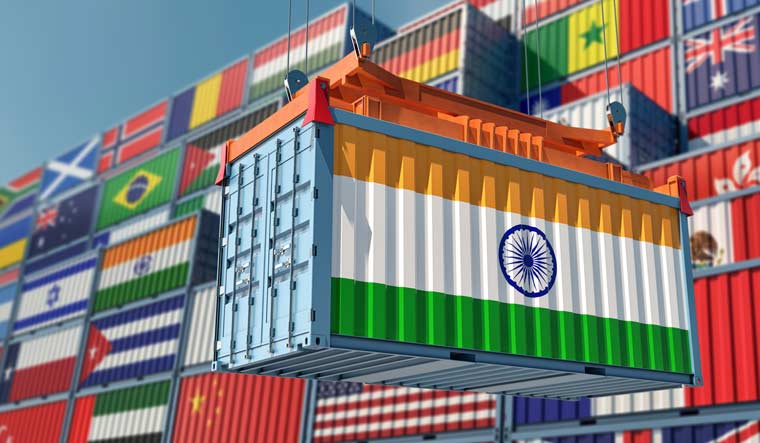
The global apparel market is presents a complex picture with declining imports in major regions like the US and EU, contrasting with a rise in Indian apparel exports reveals Wazir Advisors’ June 2024 ‘Apparel trade scenario in key global markets and India’ report.
Falling imports, rising exports, a balancing act
Wazir Advisors’ monthly report reveals apparel imports across key markets except the UK witnessed a year-on-year decline in April 2024. This aligns with the decline in retailer inventory data, indicating efforts to clear out existing stock. However, this trend contradicts the rise in US consumer confidence, which could signal pent-up demand waiting to be unleashed. Several factors could have led to this scenario.
The retailer inventory data suggests high inventory levels in previous quarters. For example, the Q1 inventory value of Walmart is $55.4 billion and the year-to-date (YTD) change is -3 per cent. Similarly Target’s inventory value in Q1 is $11.7 billion and YTD is -7 per cent. Kohl’s inventory value for the same quarter is $3.1 billion with -13 per cent change. In Gap’s case the value is $2.0 billion with -15 per cent change and VF Corp’s inventory value is $1.8 billion with -23 per cent change. The significant decline in inventory value at major US retailers during Q1 2024 reflects their cautious approach to managing stock levels.
Another factor leading to a drop in imports in key markets is retailers exercising caution amidst global economic uncertainties. Conversely, India's apparel exports in May 2024 showed a significant 17 per cent YoY growth. This positive trend might be driven by increased global demand for Indian apparel, potentially due to competitive pricing or specific product categories. Diversification of export markets by Indian apparel manufacturers.
However, India’s apparel exports growth is overshadowed by a decline in exports to Bangladesh, a major competitor. The flat export to China, a dominant market, further complicates the picture.
Discrepancy in consumer confidence and retail sales
US consumer confidence rose by 5 per cent in April 2024, indicating a potential rise in consumer spending. However, US apparel store sales in May 2024 were estimated to be 1 per cent lower compared to the previous year. This inconsistency suggests consumers might be prioritizing other purchases over apparel. Another reason could be a shift towards online shopping.
While US home furnishing stores experienced a surprising 4 per cent increase in May 2024, apparel stores witnessed a slight decline. Similarly, UK apparel store sales are down. This inconsistency highlights a shift in consumer spending behavior, possibly towards home goods over apparel. However, the strong growth in UK online clothing sales suggests a potential migration towards e-commerce channels.
Regional variations
The UK stands out with a rise in apparel imports at 14 per cent YoY despite a 3 per cent decline in apparel store sales. This could imply UK retailers are stocking up in anticipation of future demand. There is changing consumer preferences within the UK market. Interestingly,
While US online clothing and accessories sales witnessed a slight decline in Q1 2024, UK online clothing sales experienced a 7 per cent growth. This suggests the e-commerce apparel market might be stabilizing after a period of rapid growth.
The data points towards a global apparel market in transition. Declining imports and high inventory levels indicate a period of adjustment. However, rising Indian exports and a potential shift towards online shopping suggest opportunities for growth. It's crucial to monitor consumer spending patterns and regional variations to understand the evolving dynamics of this industry.
The Karl Mayer Group, a leading textile machinery and plant engineering company, has secured a significant legal victory in China against Fujian Xin Gang Textile Machinery Co. Ltd. This triumph marks a crucial step in the fight against product piracy. After a lengthy legal battle initiated in 2021, the Supreme People's Court of China ruled in favor of the Karl Mayer Group in May 2024.
The dispute centered on a patented system for heating the carrying-lever shaft of Tricot and Raschel machines, a critical innovation allowing the machines to adjust to varying ambient temperatures. This patent, granted in China in November 2011, underpins the superior performance of Karl Mayer’s technology.
Fujian Xin Gang Textile's attempt to cancel the patent was dismissed, and the court ordered the company to cease production, sales, and advertising of the infringing machines. A fine was also imposed.
Karl Mayer's victory underscores the importance of protecting intellectual property and sends a clear message to the market that copying innovations is futile. Zhen Kong, General Manager of Karl Mayer (China), emphasized the significance of the ruling, noting that it strengthens legal certainty in competition in China. This is particularly crucial for companies dedicated to innovation.
The decision ensures Karl Mayer's competitive edge in the vital Chinese market, reinforcing the company's global leadership in textile machinery.
Tonello has unveiled its new website, ‘Inspiring,’ offering a fresh perspective on fashion and denim. This digital platform embodies the company's creative vision, connecting brands, professionals, companies, and students. It emphasizes the synergy between art and technology, serving as a collaborative space for innovation and creativity.
The website, inspiring.tonello.com, is more than a portal; it's a journey into Tonello's world. Divided into five sections—Essence, Dossier, Journal, The Story, and Collections - each part uniquely showcases the brand's commitment to innovation and sustainability. "Essence" introduces the site's core concept, while "Journal" features interviews, updates on research, and new technological advancements. "Dossier" offers practical tips on denim care and sustainable dyeing methods.
"The Story" narrates Tonello's history and the evolution of denim through various decades, blending fashion, society, and pop culture. "Collections" highlights exclusive capsule collections created with top designers, showcasing cutting-edge research and experimentation.
Inspiring is not just a website; it’s a dynamic platform designed to inspire and engage. It prioritizes humanity and creativity, positioning Tonello as "The Inspiring Company." Visit Inspiring to explore this innovative and sustainable fashion journey.

